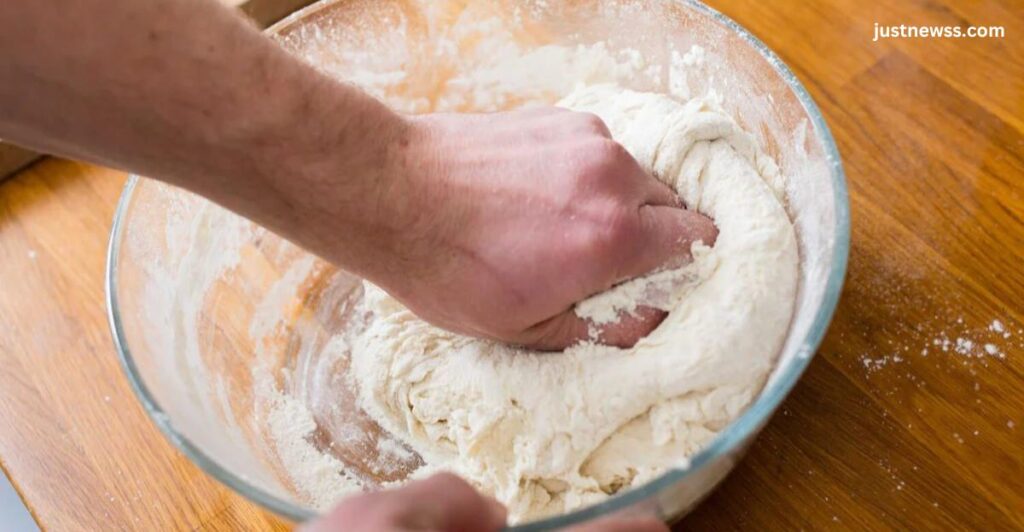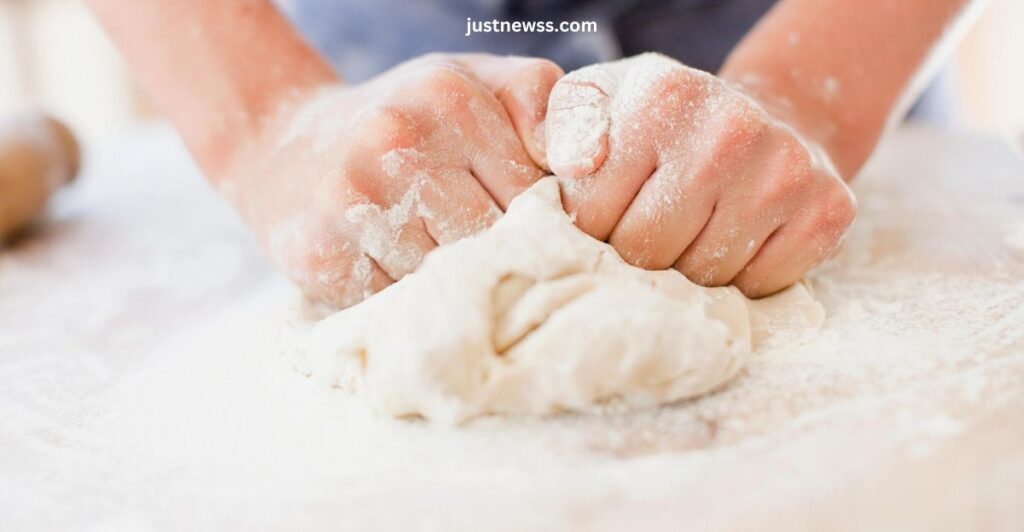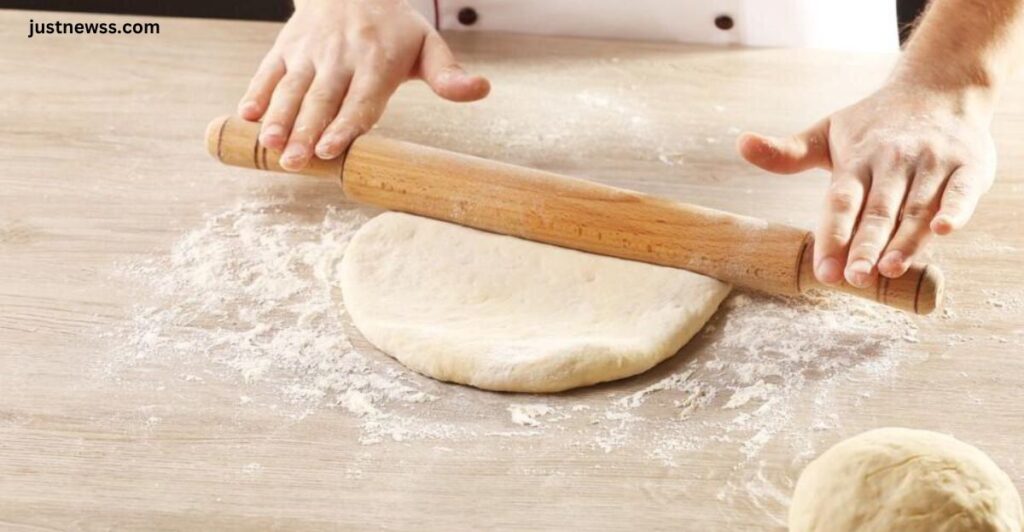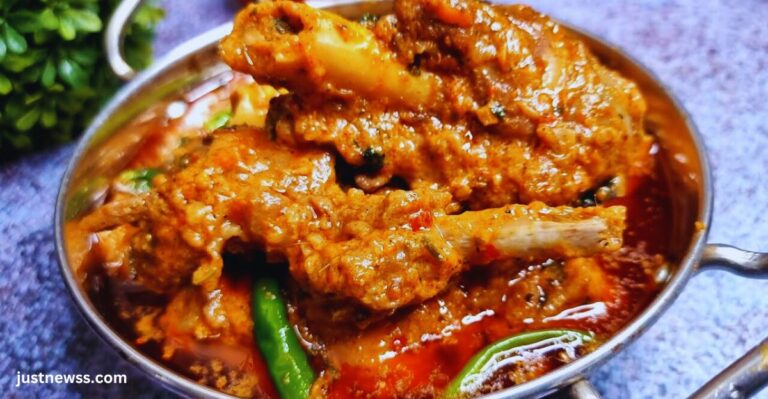Buckwheat noodles, also known as soba, are a popular staple in Japanese cuisine, cherished for their nutty flavor and health benefits. In this comprehensive guide, we will walk you through the detailed process of making the best buckwheat noodles recipe from scratch. Whether you’re a novice cook or an experienced chef, these instructions will ensure your soba noodles come out perfectly every time.
Ingredients and Tools You Need
To make authentic buckwheat noodles, you’ll need the following ingredients and tools:
Ingredients:
- 2 cups buckwheat flour: Look for 100% buckwheat flour for the most authentic taste.
- 1/2 cup all-purpose flour: This helps to bind the dough and makes it easier to work with.
- 3/4 cup water: Adjust as needed to form a firm dough.
- A pinch of salt: Enhances the flavor of the noodles.
Read More:
Easy and Delicious Pico de Gallo Recipe
How To Make Best Gingerbread Cookie Recipe at Home
Tools:
- Mixing bowl: For combining the ingredients.
- Rolling pin: To roll out the dough evenly.
- Sharp knife: For cutting the noodles.
- Large pot: To boil the noodles.
- Colander: For draining the noodles.
- Bamboo mat or parchment paper: To help with rolling and cutting the dough.
Step-by-Step Instructions
Step 1: Prepare the Dough
In a large mixing bowl, combine 2 cups of buckwheat flour and 1/2 cup of all-purpose flour. Add a pinch of salt to enhance the flavor. Gradually add 3/4 cup of water, mixing with your hands until the dough comes together. It should be firm but not too dry. If the dough feels too dry, add a bit more water, a tablespoon at a time.

Step 2: Knead the Dough
Turn the dough out onto a lightly floured surface. Knead it for about 10 minutes until it becomes smooth and elastic. This step is crucial for developing the gluten in the all-purpose flour, which helps the noodles hold together.

Step 3: Roll Out the Dough
Divide the dough into two equal portions. Roll each portion out on a lightly floured surface into a thin sheet, about 1/8 inch thick. To achieve even thickness, use a rolling pin and apply even pressure.

Step 4: Cut the Noodles
Once the dough is rolled out, lightly dust the surface with flour to prevent sticking. Fold the sheet of dough into thirds and use a sharp knife to cut it into thin strips. The ideal width for soba noodles is about 1/8 inch.
Step 5: Cook the Noodles
Bring a large pot of water to a boil. Add a pinch of salt and gently place the noodles into the boiling water. Cook for 3-4 minutes, or until the noodles are tender but still firm to the bite. Be careful not to overcook them.
Step 6: Rinse and Serve
Drain the cooked noodles in a colander and rinse them under cold running water to stop the cooking process and remove excess starch. This step ensures that the noodles have a firm, chewy texture.
Serving Suggestions
Buckwheat noodles can be enjoyed in various ways. Here are a few popular serving suggestions:
Zaru Soba
For a classic Japanese experience, serve the noodles cold with a dipping sauce called tsuyu. Arrange the noodles on a bamboo mat (zaru) and garnish with sliced green onions, grated daikon radish, and wasabi. Dip each bite of noodles into the sauce before eating.
Soba Noodle Soup
For a comforting meal, serve the noodles in a hot broth. Prepare a simple broth with dashi, soy sauce, and mirin. Add the cooked noodles and top with sliced green onions, mushrooms, and a soft-boiled egg.
Stir-Fried Soba
For a quick and nutritious meal, stir-fry the noodles with your favorite vegetables and proteins. Heat a tablespoon of oil in a wok, add sliced vegetables, tofu or chicken, and stir-fry until cooked. Add the noodles and season with soy sauce and sesame oil.
Health Benefits of Buckwheat Noodles
Buckwheat noodles are not only delicious but also packed with nutrients and health benefits:
Rich in Nutrients
Buckwheat is high in protein, fiber, and essential minerals like magnesium and manganese. It’s also a good source of B vitamins, which are crucial for energy metabolism.
Gluten-Free
Although this recipe includes some all-purpose flour, buckwheat itself is naturally gluten-free. You can make a 100% buckwheat version if you need to avoid gluten completely.
Low Glycemic Index
Buckwheat noodles have a lower glycemic index compared to regular pasta, meaning they cause a slower, more stable rise in blood sugar levels. This makes them a great option for people managing diabetes or looking to maintain steady energy levels.
High in Antioxidants
Buckwheat contains several antioxidants, including rutin, which helps to protect the body from free radical damage and supports cardiovascular health.
Tips for Perfect Buckwheat Noodles
Use Fresh Flour
For the best flavor and texture, use fresh, high-quality buckwheat flour. Store the flour in the refrigerator to keep it fresh.
Work Quickly
Buckwheat dough can dry out quickly, so work efficiently to prevent it from becoming too dry and brittle.
Practice Makes Perfect
Making soba noodles can be challenging at first, but don’t get discouraged. With practice, you’ll improve your technique and achieve better results.
Conclusion
Making buckwheat noodles from scratch is a rewarding process that yields delicious, healthy noodles you can enjoy in a variety of dishes. By following these detailed steps and tips, you’ll be able to create the best buckwheat noodles right in your own kitchen. Enjoy the nutty flavor and chewy texture of homemade soba noodles, and explore different ways to serve them for a delightful culinary experience.






